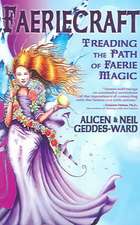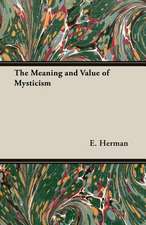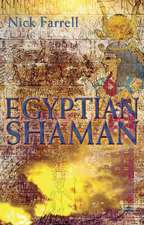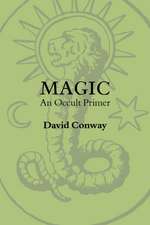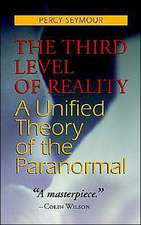The Secret Life of Lady Liberty: Goddess in the New World
Autor Robert Hieronimus Ph.D., Laura E. Cortneren Limba Engleză Paperback – 22 sep 2016
Uncovering the forgotten lineage of the Statue of Liberty, Bob Hieronimus and Laura Cortner explain how she is based on a female symbol representing America on the earliest maps of the continent in the form of a Native American “Queen.” The image of a woman symbolizing independence was embraced by the American revolutionaries to rally the populace against the King, filling the role of “Founding Mother” and protector of the fledgling republic. Incorporating Libertas, the Roman goddess of freed slaves, with Minerva, Demeter, Justice, and the Indian Princess, Lady Liberty is seen all over the nation’s capital, and on the seals and flags of many states.
Preț: 80.58 lei
Preț vechi: 132.80 lei
-39% Nou
Puncte Express: 121
Preț estimativ în valută:
15.42€ • 15.93$ • 12.83£
15.42€ • 15.93$ • 12.83£
Carte disponibilă
Livrare economică 07-19 martie
Preluare comenzi: 021 569.72.76
Specificații
ISBN-13: 9781594774935
ISBN-10: 1594774935
Pagini: 448
Ilustrații: 103 b&w illustrations
Dimensiuni: 152 x 229 x 30 mm
Greutate: 0.54 kg
Editura: Inner Traditions/Bear & Company
Colecția Destiny Books
ISBN-10: 1594774935
Pagini: 448
Ilustrații: 103 b&w illustrations
Dimensiuni: 152 x 229 x 30 mm
Greutate: 0.54 kg
Editura: Inner Traditions/Bear & Company
Colecția Destiny Books
Notă biografică
Robert Hieronimus, Ph.D. is an internationally known historian, visual artist, and radio host and has appeared on History, Discovery, BBC, and National Geographic. The host of 21st Century Radio, he lives in Maryland. Laura E. Cortner has co-authored previous titles with Robert Hieronimus including Founding Fathers, Secret Societies and United Symbolism of America. Her work appears regularly in periodicals like UFO Magazine, FATE Magazine, and several Beatles publications. She is the director of the Ruscombe Mansion Community Health Center and lives in Maryland.
Extras
3
What the Statue of Liberty Learned from the Indian Princess
Thomas Paine wrote about the Goddess of Liberty in his 1775 poem “The Liberty Tree” in which he describes her coming down from the sky to plant the tree of liberty--a Native American concept. When the Colonial artists put their hands to it, the Indian Princess was seen everywhere, supported by the Liberty goddess and surrounded by many other supplemental goddesses representing wisdom, abundance, and victory. The lines between them began to blur as the Indian Princess started wearing Liberty’s clothes and carrying her implements. Once the nation was born, the Indian Princess/Liberty really exploded in popularity. The brand new U.S. government used a refined version of the Indian Princess as the symbol for themselves on all but one of the earliest Congressional medals.
For a short while in U.S. history, the brightest minds of the Revolutionary generation saw themselves as this Indian Princess. They were not ashamed to emulate the Native Americans and acknowledge how much they owed to them. From our modern perspective, it’s hard to appreciate the dominant influence the Indians had over the Colonists during this era. In the generations before the Revolution, the Indians controlled the balance of power between the French and the British. Indians controlled all the key routes for commerce and negotiation.
The discovery of a community of self-governing Indians in an uncorrupted natural environment was the spark needed to set the Age of Enlightenment in motion. Philosophers like Locke, Rousseau, and Voltaire started writing about “man in his natural state,” referring to the Native Americans and their realization of individual liberty. As Locke put it: “In the Beginning all the World was America.” Rousseau said, “The state reached by most of the savage nations known to us . . . [is] the state least subject to revolutions, the best state for man.”23 Europeans feared the Native Americans, but grew to admire them as well, and learning about them led the great European philosophers to challenge the age-old hierarchical control of the church and state, which eventually culminated in the American Revolution.
The most convincing evidence is to see these opinions in the words of the founders themselves. John Adams wrote in his Defence of the Constitutions in 1787 that the U.S. Constitution was their attempt to “set up a government of . . . modern Indians.” The Second Continental Congress invited 21 Iroquois sachems to observe the debates over independence in May and June of 1776. The Indians camped out in the room above Congress on the second floor. At the end of this observation period, they gave John Hancock, the president of the Congress, an Indian name, Karanduan, or the Great Tree, likening him to their own Great Law of Peace, the central hub around which all their law radiated.
The Great Law of Peace and the Council of the Clan Mothers
The Iroquois tell of a Peacemaker prophet who walked the lands many years ago trying to convince the warring nations to give up their blood feud ways and bury the hatchet under the Tree of Peace. Deganawidah is said to have spoken through Aionwatha, and with the help of the first Clan Mother Jikonsahseh, who convinced her people to listen to the prophetic words, they established the Great Law of Peace. The oral traditions recount this happened on a date in late summer on which an eclipse occurred, and Seneca Barbara Alice Mann collaborated with astronomer Jerry Fields at the University of Toledo to pinpoint the very year. Combining astronomical data with oral traditions Mann and Fields have confirmed the Iroquois Great Law of Peace was enacted in A.D. 1142. This means there has been a representational form of government keeping the peace over a wide expanse of the Americas for hundreds of years before Columbus was even born.
The role of the Clan Mothers is compared to that of the Supreme Court in the U.S. design. That is because the Clan Mothers made all the most important and final decisions in their society. The reason the Great Law of Peace system worked so well for the League of the Iroquois, and for so long, but has worked only partially well for the Euro-Americans and for only 200 some years, is because the Euro-Americans left out the women, the family and the concept of living in relationship with the Earth. The Iroquois system had a second tier under their confederation, which was ignored or not perceived as important to the framers of the Constitution. That second tier was the Clan system of families, and the Clan system was ruled by the women. Attention to spirituality and relationship were left out of government decision-making when the women of the American Revolution were not invited to inherit the powerful role the Iroquois reserved for their Clan Mothers. Perhaps the men of the Revolutionary generation believed they could handle only one revolution at a time.
The elevated status of women among the Iroquois was not unknown to the Revolutionary generation, however. Barbara Alice Mann points to the earliest Jesuit reports on contact with the Iroquois in the early 1700s, where they observed the women’s power: “Nothing is more real than the women’s superiority. It is they who really maintain the tribe, the nobility of blood, the genealogical tree, the order of generations and conservation of the families. In them resides all the real authority . . . they are the soul of the councils, the arbiters of peace and war; they hold the taxes and the public treasure; it is to them that the captives are entrusted; they arrange the marriages; the children are under their authority; and the order of succession is founded on their blood.”
What the Statue of Liberty Learned from the Indian Princess
Thomas Paine wrote about the Goddess of Liberty in his 1775 poem “The Liberty Tree” in which he describes her coming down from the sky to plant the tree of liberty--a Native American concept. When the Colonial artists put their hands to it, the Indian Princess was seen everywhere, supported by the Liberty goddess and surrounded by many other supplemental goddesses representing wisdom, abundance, and victory. The lines between them began to blur as the Indian Princess started wearing Liberty’s clothes and carrying her implements. Once the nation was born, the Indian Princess/Liberty really exploded in popularity. The brand new U.S. government used a refined version of the Indian Princess as the symbol for themselves on all but one of the earliest Congressional medals.
For a short while in U.S. history, the brightest minds of the Revolutionary generation saw themselves as this Indian Princess. They were not ashamed to emulate the Native Americans and acknowledge how much they owed to them. From our modern perspective, it’s hard to appreciate the dominant influence the Indians had over the Colonists during this era. In the generations before the Revolution, the Indians controlled the balance of power between the French and the British. Indians controlled all the key routes for commerce and negotiation.
The discovery of a community of self-governing Indians in an uncorrupted natural environment was the spark needed to set the Age of Enlightenment in motion. Philosophers like Locke, Rousseau, and Voltaire started writing about “man in his natural state,” referring to the Native Americans and their realization of individual liberty. As Locke put it: “In the Beginning all the World was America.” Rousseau said, “The state reached by most of the savage nations known to us . . . [is] the state least subject to revolutions, the best state for man.”23 Europeans feared the Native Americans, but grew to admire them as well, and learning about them led the great European philosophers to challenge the age-old hierarchical control of the church and state, which eventually culminated in the American Revolution.
The most convincing evidence is to see these opinions in the words of the founders themselves. John Adams wrote in his Defence of the Constitutions in 1787 that the U.S. Constitution was their attempt to “set up a government of . . . modern Indians.” The Second Continental Congress invited 21 Iroquois sachems to observe the debates over independence in May and June of 1776. The Indians camped out in the room above Congress on the second floor. At the end of this observation period, they gave John Hancock, the president of the Congress, an Indian name, Karanduan, or the Great Tree, likening him to their own Great Law of Peace, the central hub around which all their law radiated.
The Great Law of Peace and the Council of the Clan Mothers
The Iroquois tell of a Peacemaker prophet who walked the lands many years ago trying to convince the warring nations to give up their blood feud ways and bury the hatchet under the Tree of Peace. Deganawidah is said to have spoken through Aionwatha, and with the help of the first Clan Mother Jikonsahseh, who convinced her people to listen to the prophetic words, they established the Great Law of Peace. The oral traditions recount this happened on a date in late summer on which an eclipse occurred, and Seneca Barbara Alice Mann collaborated with astronomer Jerry Fields at the University of Toledo to pinpoint the very year. Combining astronomical data with oral traditions Mann and Fields have confirmed the Iroquois Great Law of Peace was enacted in A.D. 1142. This means there has been a representational form of government keeping the peace over a wide expanse of the Americas for hundreds of years before Columbus was even born.
The role of the Clan Mothers is compared to that of the Supreme Court in the U.S. design. That is because the Clan Mothers made all the most important and final decisions in their society. The reason the Great Law of Peace system worked so well for the League of the Iroquois, and for so long, but has worked only partially well for the Euro-Americans and for only 200 some years, is because the Euro-Americans left out the women, the family and the concept of living in relationship with the Earth. The Iroquois system had a second tier under their confederation, which was ignored or not perceived as important to the framers of the Constitution. That second tier was the Clan system of families, and the Clan system was ruled by the women. Attention to spirituality and relationship were left out of government decision-making when the women of the American Revolution were not invited to inherit the powerful role the Iroquois reserved for their Clan Mothers. Perhaps the men of the Revolutionary generation believed they could handle only one revolution at a time.
The elevated status of women among the Iroquois was not unknown to the Revolutionary generation, however. Barbara Alice Mann points to the earliest Jesuit reports on contact with the Iroquois in the early 1700s, where they observed the women’s power: “Nothing is more real than the women’s superiority. It is they who really maintain the tribe, the nobility of blood, the genealogical tree, the order of generations and conservation of the families. In them resides all the real authority . . . they are the soul of the councils, the arbiters of peace and war; they hold the taxes and the public treasure; it is to them that the captives are entrusted; they arrange the marriages; the children are under their authority; and the order of succession is founded on their blood.”
Cuprins
Foreword
By J. Zohara Meyerhoff Hieronimus, D.H.L.
Acknowledgments
1 What Do We Mean by “The Secret Life of Lady Liberty”?
2 Where Are Your Women?
3 What the Statue of Liberty Learned from the Indian Princess
4 Goddesses Were Everywhere
5 Colossal Statuary Consists of More than Size A Statue of Liberty Time Line
6 Behind the Statue of Liberty Is Her Earth-Mother Indian Queen
7 How the Statue of Liberty Became the Whore of Babylon
8 The Black Statue of Liberty
9 The Statue of Liberty and the Secrets of Mary
10 The Liberty to Choose What to Believe
11 Armed Liberty Freedom Acquired through Bloodshed
12 Lady Liberty and Her Sisters We Are One
13 A Delightful Inconsistency Feminists and Labor Activists on the Statue
14 The Statue of Liberty as a Symbol for the Future
Appendix
Guest Biographies
The Lady Liberty Radio Interview Series
Appendix 2
Brief Biographies of a Few Female Leaders
We Should Have Learned about in School
Notes
Bibliography
Index
About the Authors
By J. Zohara Meyerhoff Hieronimus, D.H.L.
Acknowledgments
1 What Do We Mean by “The Secret Life of Lady Liberty”?
2 Where Are Your Women?
3 What the Statue of Liberty Learned from the Indian Princess
4 Goddesses Were Everywhere
5 Colossal Statuary Consists of More than Size A Statue of Liberty Time Line
6 Behind the Statue of Liberty Is Her Earth-Mother Indian Queen
7 How the Statue of Liberty Became the Whore of Babylon
8 The Black Statue of Liberty
9 The Statue of Liberty and the Secrets of Mary
10 The Liberty to Choose What to Believe
11 Armed Liberty Freedom Acquired through Bloodshed
12 Lady Liberty and Her Sisters We Are One
13 A Delightful Inconsistency Feminists and Labor Activists on the Statue
14 The Statue of Liberty as a Symbol for the Future
Appendix
Guest Biographies
The Lady Liberty Radio Interview Series
Appendix 2
Brief Biographies of a Few Female Leaders
We Should Have Learned about in School
Notes
Bibliography
Index
About the Authors
Recenzii
“I could not agree more with the premise of this well-written book. I truly believe that more women in positions of power would do much to alter the political landscape for the good. We men seemed to have messed things up. . . . let’s give the ladies a chance.”
“The Secret Life of Lady Liberty is a rich, thoughtful, and fascinating excursion into many of the concepts, ideas, and ideologies that have influenced thoughts of freedom throughout humanity. It examines how we have struggled with various kinds of freedom and have been forced to weigh them against other values. This work of Hieronimus and Cortner is truly a cultural tour de force.”
“A feminist and multi-ethnic history of the Statue of Liberty is way overdue. This account, which sparkles with insights, evokes the work of Katya Miller on the statue atop the U.S. Capitol dome. Both histories help complete the record. This work, which provides a new lens on our history, is a unique history of rediscovery that I hope will reconfirm our nation’s responsibility to foster freedom for all peoples (resisting patriarchy, assisting peace), in the tradition of the Statue of Liberty as a symbol for empowerment.”
“Who would have imagined that you could draw our country’s entire history through the iconic image of Liberty gracing the New York Harbor? That’s precisely what the authors do in this engaging and well-documented journey through the long-neglected outtakes of our past. The exploration of Native American and feminist history and values, combined with contemporary scientific research, lead us to envision a sustainable future where liberty indeed prevails.”
“The Secret Life of Lady Liberty ranges through history, biology, mythology, and politics to investigate the meaning--and the power--of the Statue of Liberty; enjoyable to read, stimulating, and sometimes inspiring.”
“This book is an eye opener! Much of our history has been edited out of what we’ve been taught, giving us a distorted view not only of our past but of the possibilities for our future. By revealing how the power to give and nurture life symbolized by female figures inspired many of our democratic ideals, this wonderful book enlightens and empowers us at this critical time when we urgently need new ways of thinking about our world.”
“The words on the Statue of Liberty base: ‘Give me your tired, your poor, your huddled masses yearning to breathe free . . .’ reflect indigenous and feminine values of nurturing, caretaking, welcoming; ‘I lift my torch . . .’ a symbol of bringing light and consciousness. I marvel at the weave, depth, coverage, and yet readability of this very well-researched book. How wonderful it would be to have a couple of its chapters excerpted into a text for American history, a high school required course.”
“The Secret Life of Lady Liberty is an in-depth, intriguing, and insightful examination of mythic, spiritual, social justice, and political dimensions of Lady Liberty as Goddess of Freedom and Her connections with other iconic Divine Feminine forms in the USA and beyond.”
“As the daughter of a Clan Mother, a true matriarch and descendant of those intrepid women leaders of the famed Iroquois Confederacy, I deeply appreciate the work of Hieronimus and Cortner in bringing to light the central role of those we call ‘lifegivers.’ For those around the world seeking the source of feminism, life, liberty, and justice for all, I highly recommend The Secret Life of Lady Liberty.”
“No other figure today exemplifies patriotic esotericism more than Robert Hieronimus--and in this historical feast of a book he and his longtime collaborator Laura Cortner lay out a vision of the meaning, myth, and purpose behind America’s most iconic symbol. The authors sweep away conspiracism and in its place leave us with a resplendent vision of the centrality of Lady Liberty in our inner life and ideals as one people united.”
“This book takes an important step by pointing out that goddess traditions need to be examined and revised for what they can teach us in this age of male domination and the exploitation of nature. Filled with fascinating historical facts and mythological sagas, this work points the way toward an extension of the American Revolution to social and spiritual changes that are crucially needed in the 21st century. This book is rooted in the past but, like the torch of Lady Liberty itself, is a beacon meant to illuminate the future.”
“There are many books on women’s struggle for equality but most of them ignore the actual roots of this worldwide movement. Hieronimus and Cortner set the record straight. This is a remarkable story told with style, humor, and keen insights based upon exceptional scholarship. A new pillar in the study of the struggle for women’s rights.”
The French sculptor Auguste Bartholdi drew on many sources for his creation of the Statue of Liberty, gifted by France to the USA and erected on Liberty Island in New York Harbor, the construction completed in 1886. In his research, Bartholdi visited the USA and came to understand the status of women and their reverence in Native American societies. This is a subject dear to the hearts of Dr Robert Hieronimus and Laura Cortner, long-time associates in alternative radio and authorship (see The United Symbolism of America, 15/05). The authors reveal that when Native American leaders were in peace negotiations with European settlers, they asked "Where are your women?" They already had a goddess culture, and its symbolism along with that of Neolithic, Greek, Roman, British and other models inspired the sculptor to create a Lady Liberty to personify America and her destiny. In fact, in the early days of the colony an American goddess was emerging in public art. The Statue served to embrace the nation and provide a conscience, and its symbolism was taken up by women's suffrage activists and the later feminist movement. This captivating book, with a wealth of archival material, restates the importance of women and their intrinsic roles in peacekeeping, nurturing and environmental stewardship--roles that need to be shared between the sexes.
“The Secret Life of Lady Liberty is a rich, thoughtful, and fascinating excursion into many of the concepts, ideas, and ideologies that have influenced thoughts of freedom throughout humanity. It examines how we have struggled with various kinds of freedom and have been forced to weigh them against other values. This work of Hieronimus and Cortner is truly a cultural tour de force.”
“A feminist and multi-ethnic history of the Statue of Liberty is way overdue. This account, which sparkles with insights, evokes the work of Katya Miller on the statue atop the U.S. Capitol dome. Both histories help complete the record. This work, which provides a new lens on our history, is a unique history of rediscovery that I hope will reconfirm our nation’s responsibility to foster freedom for all peoples (resisting patriarchy, assisting peace), in the tradition of the Statue of Liberty as a symbol for empowerment.”
“Who would have imagined that you could draw our country’s entire history through the iconic image of Liberty gracing the New York Harbor? That’s precisely what the authors do in this engaging and well-documented journey through the long-neglected outtakes of our past. The exploration of Native American and feminist history and values, combined with contemporary scientific research, lead us to envision a sustainable future where liberty indeed prevails.”
“The Secret Life of Lady Liberty ranges through history, biology, mythology, and politics to investigate the meaning--and the power--of the Statue of Liberty; enjoyable to read, stimulating, and sometimes inspiring.”
“This book is an eye opener! Much of our history has been edited out of what we’ve been taught, giving us a distorted view not only of our past but of the possibilities for our future. By revealing how the power to give and nurture life symbolized by female figures inspired many of our democratic ideals, this wonderful book enlightens and empowers us at this critical time when we urgently need new ways of thinking about our world.”
“The words on the Statue of Liberty base: ‘Give me your tired, your poor, your huddled masses yearning to breathe free . . .’ reflect indigenous and feminine values of nurturing, caretaking, welcoming; ‘I lift my torch . . .’ a symbol of bringing light and consciousness. I marvel at the weave, depth, coverage, and yet readability of this very well-researched book. How wonderful it would be to have a couple of its chapters excerpted into a text for American history, a high school required course.”
“The Secret Life of Lady Liberty is an in-depth, intriguing, and insightful examination of mythic, spiritual, social justice, and political dimensions of Lady Liberty as Goddess of Freedom and Her connections with other iconic Divine Feminine forms in the USA and beyond.”
“As the daughter of a Clan Mother, a true matriarch and descendant of those intrepid women leaders of the famed Iroquois Confederacy, I deeply appreciate the work of Hieronimus and Cortner in bringing to light the central role of those we call ‘lifegivers.’ For those around the world seeking the source of feminism, life, liberty, and justice for all, I highly recommend The Secret Life of Lady Liberty.”
“No other figure today exemplifies patriotic esotericism more than Robert Hieronimus--and in this historical feast of a book he and his longtime collaborator Laura Cortner lay out a vision of the meaning, myth, and purpose behind America’s most iconic symbol. The authors sweep away conspiracism and in its place leave us with a resplendent vision of the centrality of Lady Liberty in our inner life and ideals as one people united.”
“This book takes an important step by pointing out that goddess traditions need to be examined and revised for what they can teach us in this age of male domination and the exploitation of nature. Filled with fascinating historical facts and mythological sagas, this work points the way toward an extension of the American Revolution to social and spiritual changes that are crucially needed in the 21st century. This book is rooted in the past but, like the torch of Lady Liberty itself, is a beacon meant to illuminate the future.”
“There are many books on women’s struggle for equality but most of them ignore the actual roots of this worldwide movement. Hieronimus and Cortner set the record straight. This is a remarkable story told with style, humor, and keen insights based upon exceptional scholarship. A new pillar in the study of the struggle for women’s rights.”
The French sculptor Auguste Bartholdi drew on many sources for his creation of the Statue of Liberty, gifted by France to the USA and erected on Liberty Island in New York Harbor, the construction completed in 1886. In his research, Bartholdi visited the USA and came to understand the status of women and their reverence in Native American societies. This is a subject dear to the hearts of Dr Robert Hieronimus and Laura Cortner, long-time associates in alternative radio and authorship (see The United Symbolism of America, 15/05). The authors reveal that when Native American leaders were in peace negotiations with European settlers, they asked "Where are your women?" They already had a goddess culture, and its symbolism along with that of Neolithic, Greek, Roman, British and other models inspired the sculptor to create a Lady Liberty to personify America and her destiny. In fact, in the early days of the colony an American goddess was emerging in public art. The Statue served to embrace the nation and provide a conscience, and its symbolism was taken up by women's suffrage activists and the later feminist movement. This captivating book, with a wealth of archival material, restates the importance of women and their intrinsic roles in peacekeeping, nurturing and environmental stewardship--roles that need to be shared between the sexes.
Descriere
The goddess origins of the Statue of Liberty and her connections with the founding and the future of America
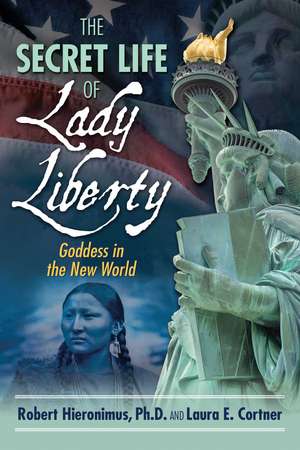

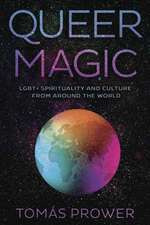

![The Source [Finding Your Way Home]](https://i3.books-express.ro/bt/9780741426338/the-source-finding-your-way-home.jpg)


